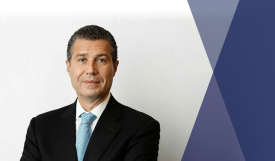Global Photoshop Experiment Highlights Diversity of Standards for Beauty
Beauty, like food, is an acquired taste; some qualities are more attractive in some parts of the world than others. Esther Honig, a 24-year-old Kansas City, Missouri-based journalist, knows this more than most. The young writer recently contracted nearly 40 individuals from 25 different countries to Photoshop an image of herself — bare shoulders, hair drawn back with no visible makeup — given the simple instructions: "Make me beautiful."
Entitled "Before and After," Honig's invited the digital editors to make any manipulation they desired, and she was transformed each time to meet a standard of beauty for each individual country. The result was a broad spectrum of looks, including multiple interpretations from a single nation.
Sri Lanka, Argentina, Ukraine, Chile, the Philippines, Kenya and many other countries' representatives (both professionals and amateur Photoshop artists) changed Honig's eye color, pupil size, lip shape, haircut, hair color, facial shape, makeup, skin tone and clothing. In one instance Honig's collar bone was erased. What constitutes beauty visibly changes from country to country, demonstrating there's a diverse palate, depending on national origin. Female photoshoppers were just as likely to radically alter an image as male, and just as likely to gaze into their own cultural and personal views of beauty. This experiment clearly shows that each portrait retouching service adheres to a culturally specific definition of beauty.
"We have to remember that this is a reflection of our culture, but also a reflection of the individual Photoshopper. In the U.S., maybe the Photoshopper felt he was given creative freedom, so he was inclined to really go at it and see what he could create," Honig said to Elle. "I don't think it necessarily says that in the U.S. we're more inclined to alter images or more obsessed with this concept of unattainable beauty."
Tasked to alter the photo as if it would be published in a fashion magazine in their country, some of the resulting images had subtle changes, while others were radically altered. The Moroccan artist's decision to dress Honig in a hijab introduced a religious factor. And the United States transformation was so radical that Honig almost didn't recognize her own face. The contrasting looks, on a global scale, potentially debunk the concept of a universal standard for beauty.
However, while local standards of beauty may differ, that does little to alleviate the fact that women are held to these standards in their individual countries. In many cases, paler skin remains in vogue, just as lighter eyes and lighter hair continue to trend. Beauty pageants, which judge women on far more than their faces and shoulders, continue to promote the idea of long, lean bodies with flowing straight hair, disproportionately large breasts and shapely bottoms — this is the case with U.S.-based pageants and international contests. The standard of beauty that aggressively promotes thin frames, cosmetic surgery, and fair skin above all else functionally disempowers women, promoting the unachievable while promising that it can be achieved.
Subscribe to Latin Post!
Sign up for our free newsletter for the Latest coverage!
© 2026 Latin Post. All rights reserved. Do not reproduce without permission.














